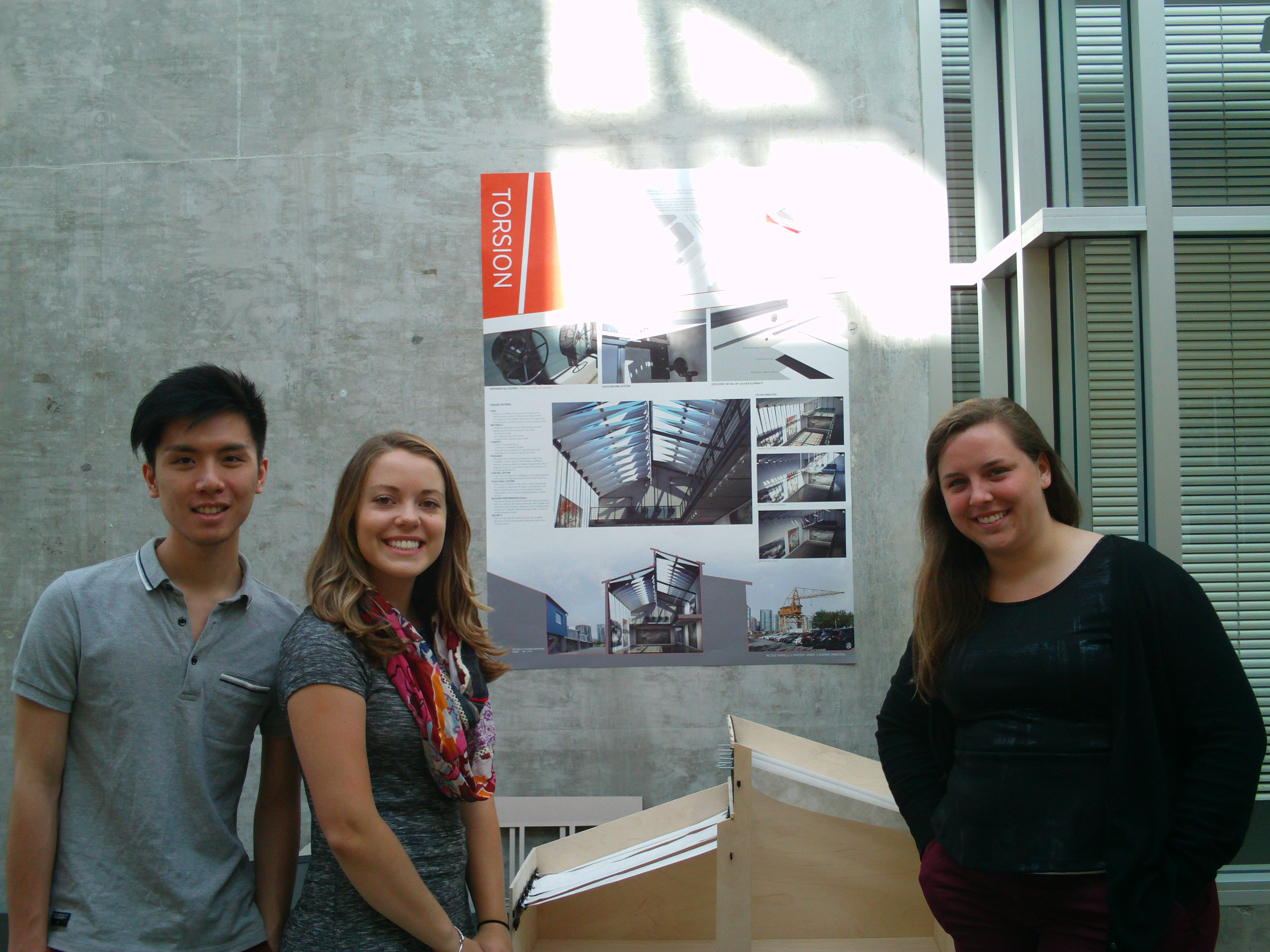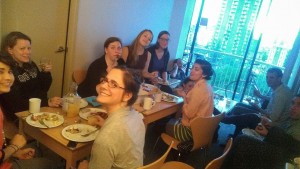B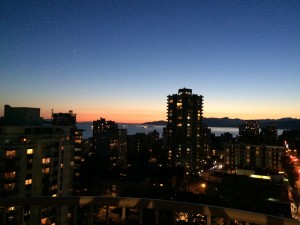 eing an experienced traveler, I look forward to every opportunity that allows me to discover a new city, culture, and way of life different than my own. Not only is it refreshing to step outside of my environment, but it expands the way I look at every new city thereafter. As a graduate architecture student fascinated in urban design, a trip to a new city to me means looking at how accessible the public transportation is, how walkable and vibrant various districts are, if public spaces are successful and utilized, and how safe pedestrians and cyclists are on the street. Every city handles these issues differently, and it is fascinating to observe and analyze how each city designs for public use.
eing an experienced traveler, I look forward to every opportunity that allows me to discover a new city, culture, and way of life different than my own. Not only is it refreshing to step outside of my environment, but it expands the way I look at every new city thereafter. As a graduate architecture student fascinated in urban design, a trip to a new city to me means looking at how accessible the public transportation is, how walkable and vibrant various districts are, if public spaces are successful and utilized, and how safe pedestrians and cyclists are on the street. Every city handles these issues differently, and it is fascinating to observe and analyze how each city designs for public use.
Driving into Vancouver for the very first time down Cambie St – a large multi-lane street – the entire city slowly exposes itself before you as you drive down towards the West End. The various bridges crossing False Creek give an expansive view into English Bay and the surrounding mountains that make up both North and West Vancouver. Immediately, I am able see the natural beauty surrounding this urban jungle, and what a crucial role nature plays in an urban context. Cruising down into the West End, the homogenous style of buildings known as “Vancouverism” becomes very apparent –30 story towers with two floors of street wall podiums, known for bringing a human scale to these vertical buildings.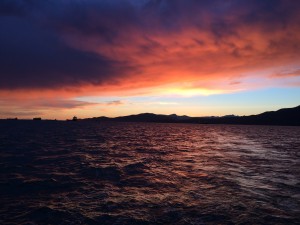
Soon enough we are driving along the beachside on a calmer road, looking out onto English Bay which is covered in parks, pedestrians, cyclists, and a well maintained beach side along the shore. Immediately I am impressed by the lack of a large highway immediately by the water – such as ones that exist in cities such as Seattle and Chicago. Pedestrians easily cross the streets with bars, restaurants, and cafés lining the surrounding streets, making for a pedestrian-dominated and human-oriented fabric. What a success! Next destination: our new home for the next 2.5 months on bustling Davie Street. All of us were excited the second we got off the bus: markets, restaurants, grocery stores and small businesses of all sorts line the entire street. Within one block of our home you could find everything from Himalayan to Indian, Italian, Japanese, American, and even Canadian Poutine. Small single story and midrise buildings with a one story canopy made me feel welcome as a pedestrian. Because the commercial lots were very small in size, you could find anywhere from 10-20 different shops and vendors on a single street – an amazing diversity within such a small area that you could never get bore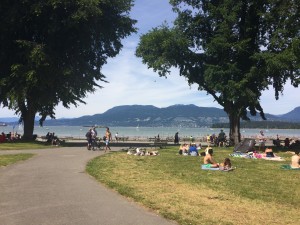 d.
d.
Piece by piece, I began to understand why Vancouver is considered a successful model of urbanism in the 21st century, and why so many desire to live here. Besides shops and restaurants galore, the city is extremely friendly to cyclists – clearly designated lanes are prevalent all around the city. In certain parts of the downtown area, bike lanes are even separated by a landscaped median, allowing for maximum safety. Moreover, investments in public transit allows a strong connection to and from the surrounding metropolitan area. These rapid self-automated trains run at 47 different stops, and 6 new ones under construction, due to be open in 2017. The investment in public transit also adds to future compact development along these train routes. By developing new districts in proximity to these Sky Train stops, citizens have an incentive – both economic and environmental – to travel to the city via public transportation rather than the requirement of a car. By promoting this type of development, Vancouver’s appeal extends to young people and working families alike.
Cities in North America have many obstacles to overcome as we head into the future – ones that prioritize public transit, mixed-use compact development that expands up rather than out,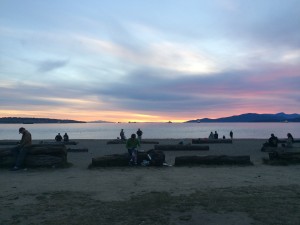 and lastly, designing for the walkable human scale rather than an auto-dominant world. Having experienced all of these positive aspects of Vancouver, I have expanded my knowledge on what successful urbanism looks like in today’s world. As a future architect and urban designer, I have redefined my criteria of what a good urban street means to me as a pedestrian, cyclist and explorer. Lastly, I have better understood how vital it is to celebrate the surrounding natural landscape and climate that each city holds, and is built on.
and lastly, designing for the walkable human scale rather than an auto-dominant world. Having experienced all of these positive aspects of Vancouver, I have expanded my knowledge on what successful urbanism looks like in today’s world. As a future architect and urban designer, I have redefined my criteria of what a good urban street means to me as a pedestrian, cyclist and explorer. Lastly, I have better understood how vital it is to celebrate the surrounding natural landscape and climate that each city holds, and is built on.
— Maya Krolikowski, Spring 2016 Architecture in Vancouver



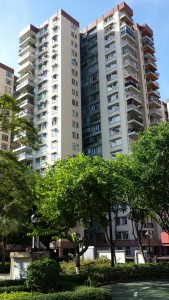 fountains. The elevated open space ensured safety for those gathered here, from the chaotic automobiles below. However, this separation between the road and the community spaces has its disadvantages. For example (and likely not a hypothetical one), suppose student sketching sections from the podium level finds himself fatigued and dehydrated therefore requiring a drink, that student must navigate towards the nearest stairwell, descend multiple floors, then look for the nearest 7- Eleven. Yet, we discovered through our interviews, that this hardly affected the lives of locals and visitors. Most of the residents expressed either indifferent or positive opinions towards Mei Foo, and were rather content with spaces we found cramp or unsanitary.
fountains. The elevated open space ensured safety for those gathered here, from the chaotic automobiles below. However, this separation between the road and the community spaces has its disadvantages. For example (and likely not a hypothetical one), suppose student sketching sections from the podium level finds himself fatigued and dehydrated therefore requiring a drink, that student must navigate towards the nearest stairwell, descend multiple floors, then look for the nearest 7- Eleven. Yet, we discovered through our interviews, that this hardly affected the lives of locals and visitors. Most of the residents expressed either indifferent or positive opinions towards Mei Foo, and were rather content with spaces we found cramp or unsanitary.
